Variable Neon Slug Facts
- The highly distinctive, if appropriate, term of Variable Neon Slug serves as the most frequently used common name for this marine marvel. Yet, the creature does have other general titles. These include such monikers as the Dusky Nembrotha and Tamja, in some regions.
- Within the scientific community, however, it’s perhaps better known by its professional designation. Like many such, though, it’s somewhat difficult for the layperson to pronounce. That’s because the remarkable animal holds the official epithet of Nembrotha kubaryana.
- This wonder of the seas received that tag due to the efforts of Rudolph Bergh. The highly respected Danish malacologist accomplished the first formal acknowledgement of it as a separate and distinct species. He achieved that scientifically noteworthy deed in the year 1877.
- Fortunately, the stunning Variable Neon Slug appears to be maintaining both a stable and sufficient population base. That pleasant state also seems to hold true throughout its known range. The IUCN therefore does not presently show it on its Red List of Threatened Species.
- The amazing Gastropod nevertheless should still be considered as facing multiple threats to its continued existence as a species. In this respect, it faces the same dangers as all forms of life on earth today. These many perils include habitat loss and ongoing climate change.
Related Articles
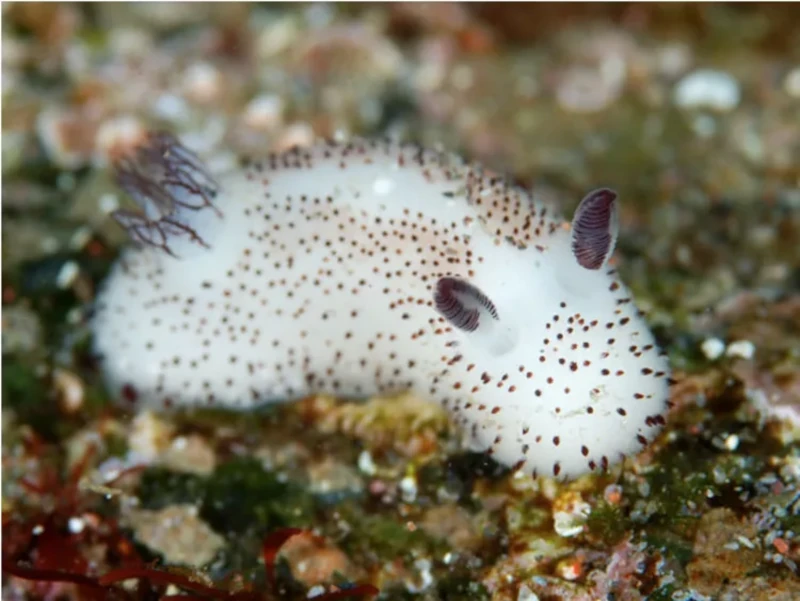
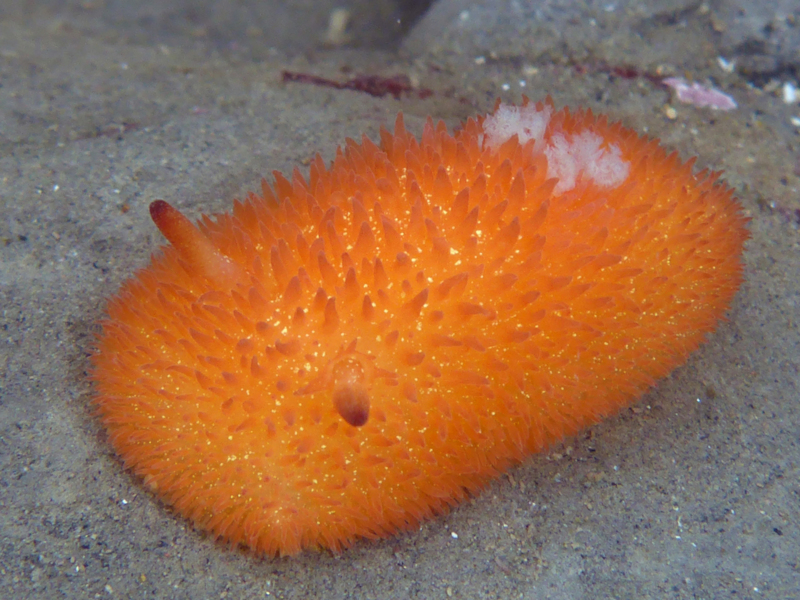

Variable Neon Slug Physical Description
The eye-catching Variable Neon Slug typically grabs the attention of those who encounter it. Yet, the awesome creation of Nature and evolution generally does so due more to its beauty than any factor of size. That’s because it remains a comparatively small wonder of the earth’s marine world.
Like most nudibranches, the physiological characteristic of sexual dimorphism does not apply to this particular species. That’s due to the fact that, like the great majority of those relatives, it evolved as a hermaphrodite. Each individual thus has both male and female reproductive organs.
In terms of average total length of body, fully mature individuals typically measure somewhere between 1.2 – 2 in (3 – 5 cm) in length. Exceptional specimens do sometimes occur, of course. However, even these extraordinary examples of growth aren’t known to ever exceed 4.7 in (12 cm).
The gill structure in this specific creature also remains worthy of note. It’s located towards the rear of the body, and forms a prominent feature, typically presenting as either bright orange or red in color. The gills usually develop arranged in a circle and can be retracted into a protective pocket.
The mantle’s quite smooth and extends slightly over the foot, which also typically shows as dark in color. Its foot, meanwhile, evolved as comparatively broad and muscular, aiding in locomotion. The edge of this structure frequently also manifests some of the same bright color seen on the body.
It’s the various colors of the Variable Neon Slug that garner the most attention among the mjority of viewers, however. The base color of the small but dynamic body itself usually appears as dark green to almost black, providing a strikingly dramatic background for its other, vibrant markings.
Its miniature body’s also adorned with an abundance of variable bright, fluorescent-colored lines and spots, which often range from vivid green to orange or red. These markings run along the length of its body and sometimes form irregular patterns or lines, thus the most common name.
The sensory organs on the head, known to science as rhinophores, additionally evolved as releatively prominent. These appendages typically show either orange or red, often with a slightly darker tip. They develop as club-shaped and ribbed, aiding in chemical detection in the water.
- Kingdom: Animalia
- Phylum: Mollusca
- Class: Gastropoda
- Order: Nudibranchia
- Family: Polyceridae
- Genus: Nembrotha
- Species: N. kubaryana
Variable Neon Slug Distribution, Habitat, and Ecology
The breathtaking Variable Neon Slug apparently evolved as indigenous to a moderately broad expanse of the marine regions of the globe. The location of that natural zone of habitation probably won’t surprise many people, though. It’s native to a large portion of the Indo-Pacific Region.
Within the Indian Ocean, it’s commonly found along the shores of East Africa. This includes the coastal waters of countries such as Tanzania and the Seychelles. The small but beautiful wonder of Nature’s also frequently present in the waters around the islands of the Maldives and Sri Lanka.
In the Western Pacific Ocean, meanwhile, it’s known in multiple areas. It’s commonly observed in the Coral Triangle, which includes the Philippines, Indonesia, Malaysia, Papua New Guinea, and the Solomon Islands. Other areas include the Great Barrier Reef, in Australia, and the waters of Japan.
In Southeast Asia, the marvel’s also noted around the coasts of Thailand, Vietnam, and other parts of the region. And in the Eastern Pacific, it’s occasionally found in more isolated locations, like the fabulous Galápagos Islands, although these sightings do typically occur much less frequently.
Following a pattern common to its kind, this impressive creature displays decidedly clear preferences regarding its choices of habitat. It therefore primarily inhabits either coral reef environments or rocky substrates in either tropical and subtropical regions of its natural range.
The animal’s most commonly found on or around various coral reefs, where it most easily finds both its food and shelter. The complex structure of such reefs provides numerous hiding places from predators and a rich supply of prey, such as tunicates and other sessile invertebrates.
In addition to coral reefs, the nudibranch also thrives on rocky substrates, particularly where encrusting organisms like sponges and bryozoans appear. It’s also usually found in shallow water, at depths ranging from 16 – 98 ft (5 – 30 m). It does occasionally live at greater depths, however.
The colorful Variable Neon Slug Possesses a primarily carnivorous diet. Given that, it mainly feeds on sessile invertebrates, especially tunicates, such as sea squirts, and sometimes sponges. Its diet typically remains selective, as well, often focusing on specific species of these organisms.
The animal’s known for its warning coloring, which signals to potential predators that it’s either toxic or unpalatable. It sequesters toxic compounds from its prey, particularly from toxic tunicates, and incorporates these into its own tissues as a defense mechanism against predators.
It both produces and receives sperm during mating, allowing for reciprocal fertilization. After mating, it lays ribbons of eggs, typically attached to the substrate in a spiral or coiled pattern. The eggs later develop into free-swimming larvae, which eventually metamorphose into adult sea slugs.
Species Sharing Its Range
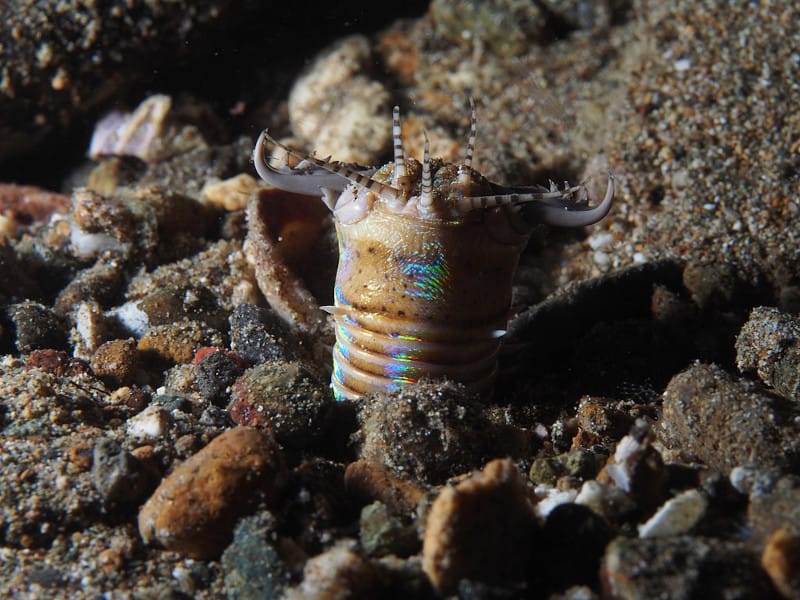
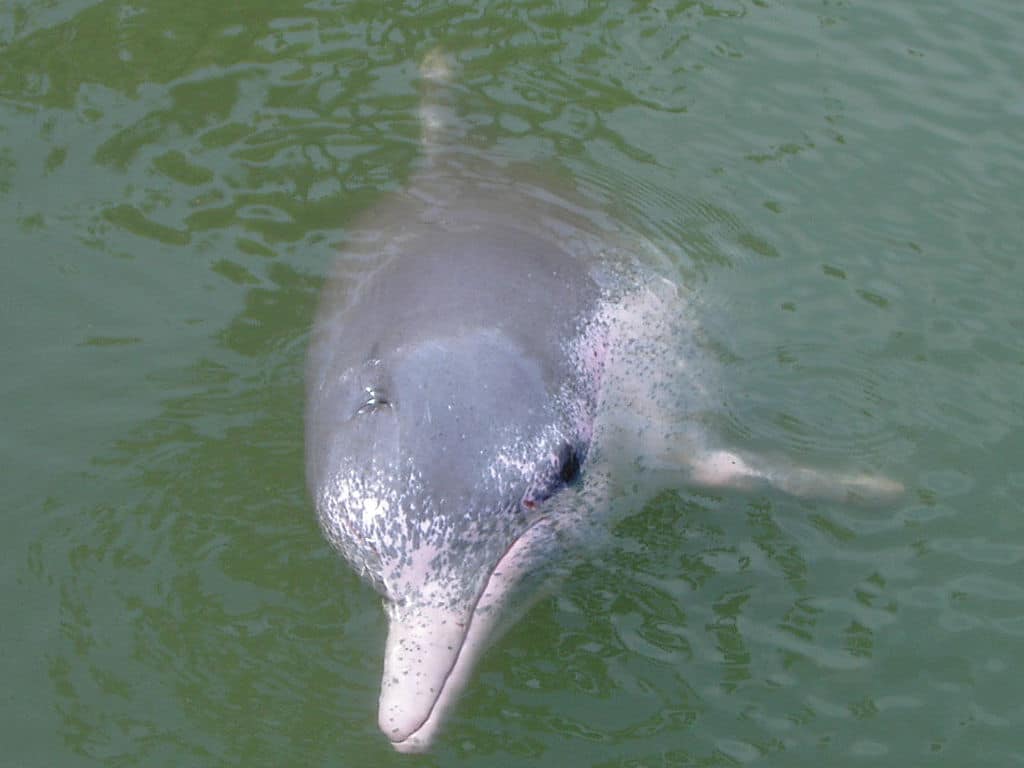
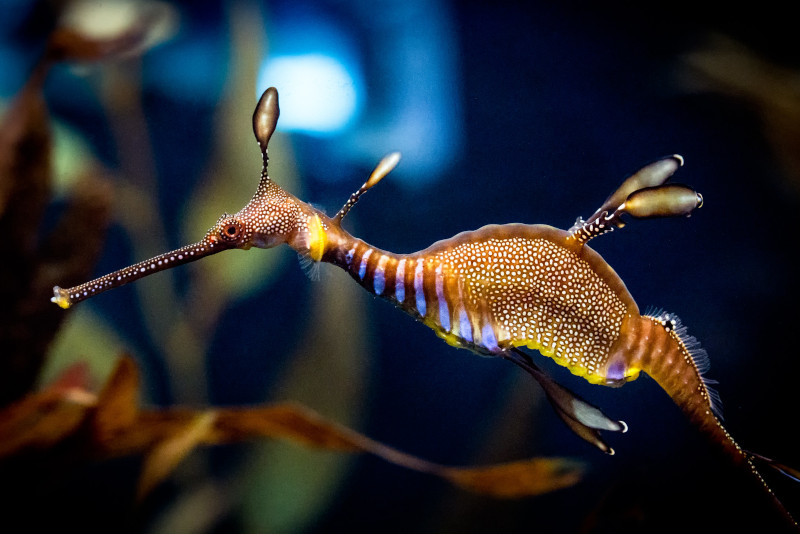
Check out our other articles on 4 Amazing Australian Spiders, Japanese Hare, Tenerife, Apple-of-Peru, Hellbender Salamander, Japanese Beetle, Eurasian Griffon Vulture, Texas Alligator Lizard
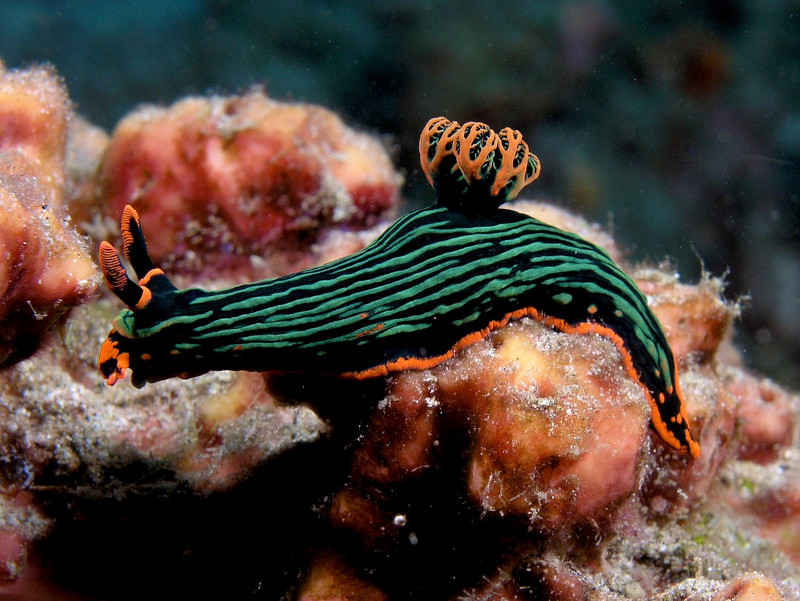
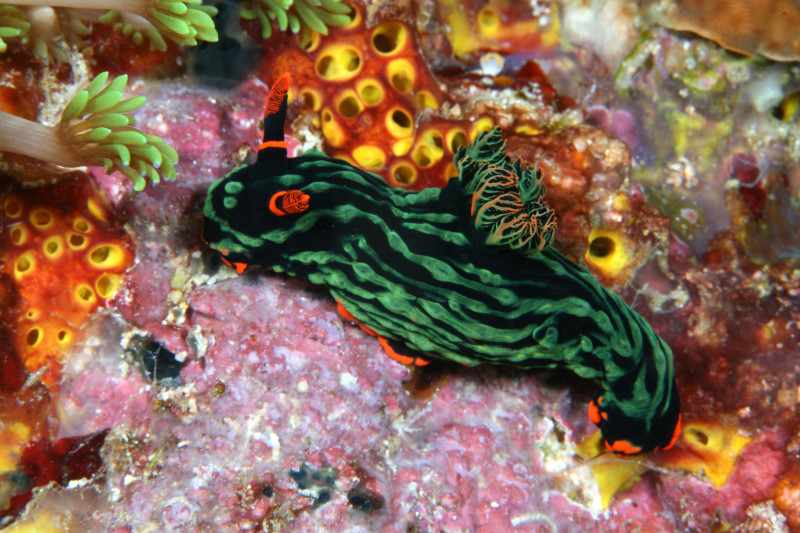
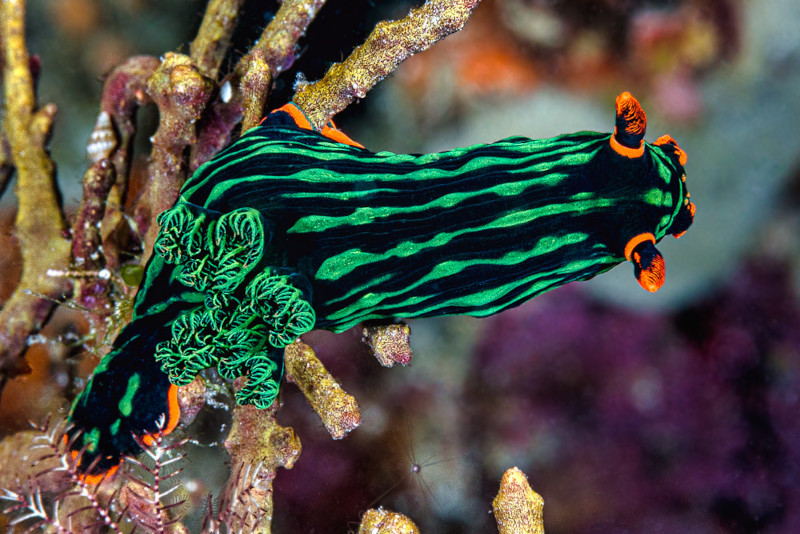









Leave a Reply